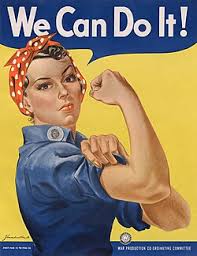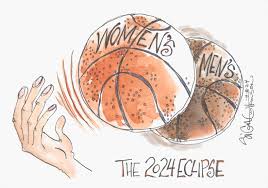1
Section One: The Fundamentals
A) What do we know about sport? What are common assumptions we make about sport and society?
Sport and social justice can co-exist when athletics are seen not just as competition, but as a platform for advocacy, inclusion, and systemic change. While sports have often reinforced existing social hierarchies, they also have the potential to challenge injustices and promote equity.
One way this happens is through policy changes that create more inclusive environments. Leagues that adopt gender-inclusive policies, equal pay initiatives, and accessible facilities for disabled athletes demonstrate how sport can actively work toward justice rather than reinforce exclusion.
| These statements above may be untrue for certain people or perspectives because of the diversity within society. Not all views align with each other as so many people think and view things differently from others. |
Exercise 3: Notebook prompt
What are some other metanarratives about sport that you are familiar with? Find an image or video clip or draw something yourself that captures this idea…
So what? Why does any of this matter? Does it matter? As something we grow up with – live with – play through – we don’t often interrogate the meanings of sport, and perhaps we don’t want to.
But being aware of these assumptions and metanarratives is especially important, I would argue, because of the centrality of sport to our everyday lives, the role that sport plays in shaping our childhood and worldviews and….. [finish that thought]
|
Recognizing these metanarratives allows us to critically engage with sport, seeing it not just as entertainment but as a powerful cultural force. It shapes our views on competition, identity, fairness, and even ethics in ways we might not consciously realize. By questioning these narratives, we can push for more inclusive and equitable sporting spaces that reflect the diversity and complexity of human experiences.
|
B) What is social justice?
Exercise 4: Padlet Prompt
Think back to the last section and try to look at some of the ideas we discussed differently. How might sport and social justice actually co-exist?
Record any images, video clips, or gifs you added to the padlet and identify a point of intersection between sport and social justice (can be an issue or a barrier or a debate or something you would like to explore in more depth in this course) . Screenshot or paste in your response below.
One key intersection between sport and social justice is equity in access and opportunity. Marginalized communities whether due to race, gender identity, disability, or socioeconomic status often face systemic barriers to participation, funding, and recognition. For example, the fight for equal pay in women’s sports, the inclusion of trans and non-binary athletes, and the push for adaptive sports for disabled athletes all highlight how sport can be a battleground for justice. A specific issue I’d like to explore further in this course is the resistance to gender inclusivity in professional and competitive sports. The debate over policies regarding trans and non-binary athletes reveals deeply ingrained ideas about fairness, biology, and identity. How can sport balance inclusivity and competition? Who gets to define what is “fair”? These questions are crucial in understanding the broader cultural tensions around gender and justice. Ultimately, sport is not just a neutral space it is a reflection of society’s values. By questioning the narratives embedded in sports culture, we can imagine a future where athletics serve as a force for social change rather than exclusion.
C) Social Justice Reading
(note: this activity is optional!)
D) KINESIOLOGY AND SOCIAL JUSTICE
Exercise 5:
Exercise 6:
What are the implications of bodies-at-risk discourse and the refusal to understand the health gap from a social justice perspective, according to the authors of this article?
| The bodies-at-risk discourse frames certain bodies often those of marginalized groups as inherently vulnerable or at risk due to biological or lifestyle factors, rather than considering the broader social, political, and economic conditions that contribute to health disparities. When policymakers and institutions emphasize individual responsibility over structural inequalities, they do not consider the structural determinants of health like poverty, racism, ableism, and gender discrimination that influence access to healthcare, diet, and living conditions.
|
Section Two: Sport Feminism
Exercise 7: Notebook Prompt
What is feminism? What does it mean to you? Choose one of the images below and explain how it captures your understanding of feminism (or find one that does speak to you and paste this into your pressbook with an explanation of why it matters to you.

This image is important to me because it represents the beginning of fighting back against inequality for women. This aligns with my understanding of feminism because it shows that women are always willing to fight for equal rights regardless of the circumstances, for example this image comes from a time where this was not considered acceptable at all.
|
Exercise 8: Notes Prompt (optional)
NB: Cornell notes is a great resource that teaches effective notetaking. Unfortunately, our system can’t save notes taken in the H5P app, so this is fully optional.
Exercise 9: Crossword Activity
Exercise 10: Padlet Prompt
|

|
|

